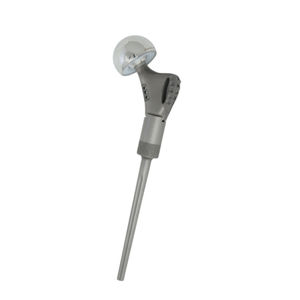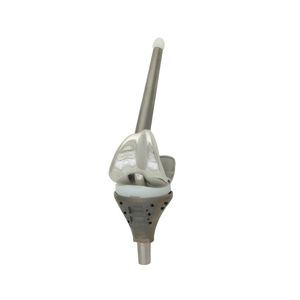
- Products
- Catalogs
- News & Trends
- Exhibitions
Total knee prosthesis
Add to favorites
Compare this product
Characteristics
- Type
- total
Description
Lightweight Materials:
Advanced materials such as titanium alloys or high-strength polymers are utilized to provide excellent strength-to-weight ratios, minimizing the overall weight of the prosthesis for enhanced patient comfort and mobility.
Strong Bonding Assembly:
Integrated taper locking mechanism that ensures a secure connection between the femoral component and the tibial base. This design minimizes micromotion and enhances stability under load, which is crucial for long-term durability.
Rotary Hinge:
Implemented rotary hinge joint design that allows for natural movement and flexion-extension of the knee. The hinge should facilitate smooth rotational motion, mimicking the biomechanics of a healthy knee joint and allowing for adaptive movements during daily activities.
Modular Components:
The prosthesis in modular segments are designed to allow customization based on patient anatomy. This modularity will enable surgeons to adapt the implant to varying femur sizes and shapes while ensuring proper alignment.
Adjustable Range of Motion:
Include mechanisms that allow surgeons to adjust the range of motion during implantation, ensuring that patients achieve optimal function without compromising stability.
Enhanced Load Distribution:
Design the distal femur replacement with an anatomical shape that optimally distributes loads across the joint, reducing stress concentrations and minimizing wear on both the implant and surrounding tissues.
Catalogs
No catalogs are available for this product.
See all of EgiFix‘s catalogsExhibitions
Meet this supplier at the following exhibition(s):

Related Searches
- Bone plate
- Compression plate
- Metallic compression plate
- Locking compression plate
- Titanium compression plate
- Distal compression plate
- Compression bone screw
- Interbody fusion cage
- Metallic compression bone screw
- Proximal compression plate
- Mid-shaft compression plate
- Forearm compression plate
- Arthrodesis nail
- Lateral compression plate
- Tibia compression plate
- Femoral stem
- PEEK interbody fusion cage
- General purpose compression bone screw
- Metallic intramedullary nail
- Humerus compression plate
*Prices are pre-tax. They exclude delivery charges and customs duties and do not include additional charges for installation or activation options. Prices are indicative only and may vary by country, with changes to the cost of raw materials and exchange rates.



